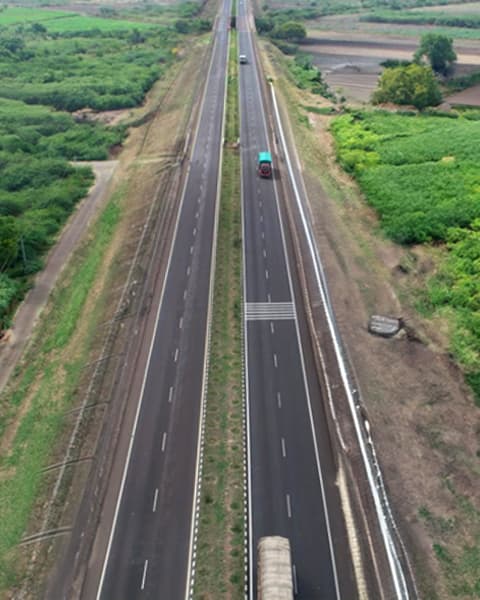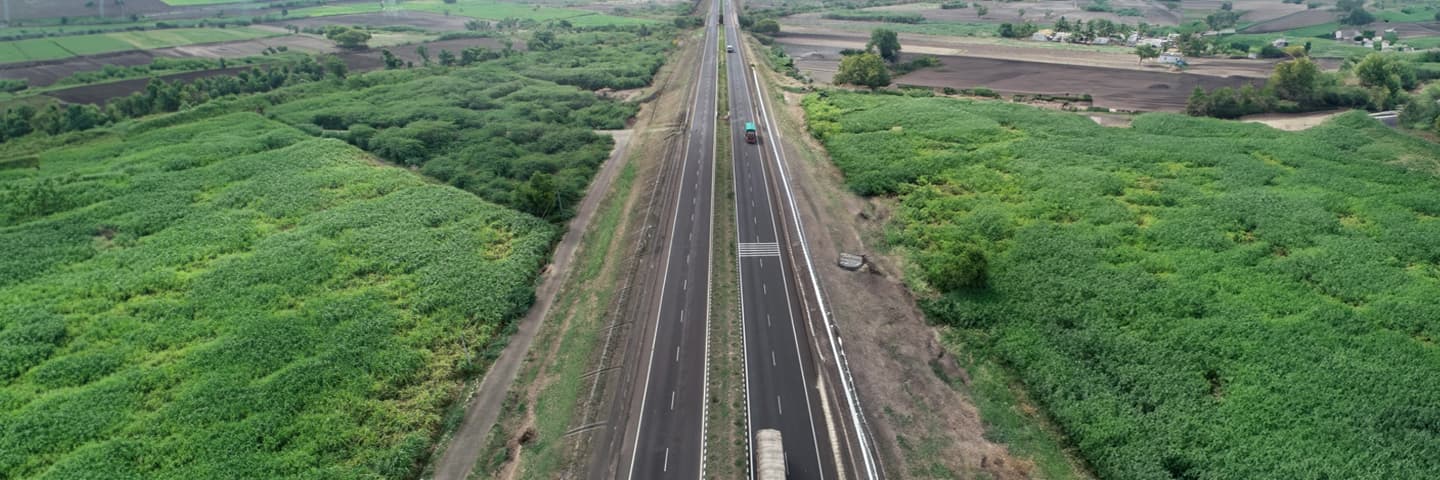Number of Lanes
4
Distance
97.2 Km
Original Concession Period
20 years

The Four Laning of the Bijapur-Hungund Section of NH50 (formerly NH 13) in Karnataka, executed under NHDP Phase III, has proven to be a vital and well-established infrastructure project. Operated by Bijapur-Hungund Tollway Private Limited (BHTPL), this 97.212 km stretch of National Highway 13 has been under a 20-year toll concession since April 2012.
This project, awarded by the National Highway Authorities of India in 2010, was built on a Build-Operate-Transfer (BOT) basis, with a remaining concession life of nearly 10 years and a possible 4-year extension under the target traffic policy.
The highway plays a pivotal role as a major transportation route, linking Eastern Ghat ports, such as Paradip, Haldia, and Port Blair, to the western regions of Maharashtra, Gujarat, and Rajasthan. It also provides essential connectivity to significant cities in Maharashtra, Bangalore, and the southern regions of Tamil Nadu and Kerala. Remarkably, this road handles 80% of commercial traffic and 20% of passenger traffic, contributing significantly to regional development, economic growth, and efficient transportation of goods and people.
Benefits of the Project Road
Enhanced Connectivity: Handling 80% commercial and 20% passenger traffic, it significantly contributes to toll revenue and enhances connectivity to tier 2 cities in Maharashtra, apart from Mumbai and Pune, extending the reach to the rest of South India.
Improved Safety: The project prioritizes safety with enhanced features like improved signage, better lighting, and wider lanes, which have resulted in a notable reduction in accidents and fatalities along this vital roadway.
Reduced Travel Times: Modernizing this road has greatly reduced travel times for both commuters and long-haul transportation. This enhancement in efficiency has led to substantial savings in fuel consumption.
Economic Growth: The improved road infrastructure serves as a magnet for investments, fostering economic growth by making the region more accessible to businesses. This, in turn, has created jobs and increased economic opportunities for local communities, contributing to overall regional development.
Impact on Road Users
Commuters: With shorter travel times and increased safety, commuters enjoy an improved quality of life as they navigate this well-maintained roadway.
Truck Drivers: Long-haul truck drivers benefit significantly from reduced transit times and lower operating costs. These improvements enhance the efficiency of the logistics industry, supporting the smooth movement of goods.
Tourists: Improved road conditions in the region have made it more attractive to tourists. This boost in tourism has a positive impact on local businesses in the hospitality industry, contributing to the overall economic development of the area.
Impact on Communities
Economic Development: Local communities have experienced notable economic growth due to increased economic activity, which includes the establishment of new businesses and the growth of manufacturing and tourism-related enterprises. The region's main commodities, such as sugar, corn, grapes, and vegetables, have contributed to this growth. Additionally, the presence of the Krishna River, which divides the project into two parts with the Almatti Dam, further enhances economic opportunities.
Employment Opportunities: The project has played a crucial role in creating job opportunities for residents. These opportunities encompass various aspects, including construction, maintenance, and the associated works required for the development and ongoing maintenance of the project. Job openings also extend to toll operations.
Infrastructure Development: The implementation of the project has led to significant developments in ancillary infrastructure. This includes the establishment of hotels, restaurants, and service stations, which benefit local entrepreneurs and further contribute to the region's economic development.
Environmental Impact: Environmental preservation and sustainable development have been paramount considerations for the road project. As part of this commitment, over 55,000 trees have been planted along the road corridor to mitigate the project's environmental impact and promote sustainability.
Accolades
The project has been certified under six ISO certification categories:
- ISO 9001:2015 Quality Management System
- ISO 14001:2015 Environmental Management System
- ISO 39001:2012 Road Traffic Safety Management System
- ISO 45001:2018 Occupational Health and Safety Management System
- ISO 31000:2018 Risk Management
- ISO 27001:2022 Information Security and Management System
Bijapur - Hungund Tollway Private Limited (BHTPL)
CIN: U45203TN2010PTC166603

